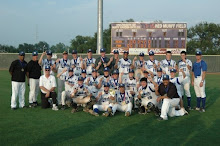Following is a list of eleven common coaching mistakes and ways to help the situation:
- Too many kids are standing around with nothing to do.
Solution – Have other coaches, or hanging-around parents, help and set up small group stations. When no help is available, coaches can do many all-inclusive team drills. Even pregame hitting practice can include separate stations (batting tee work, etc.). Having players get in ready positions and field batted balls, as if in games, during batting practice, is a good thing to keep players actively engaged. - Talking too long – Long drawn out talks are a great way to bore kids. In addition, many coaches tell kids everything they know at the first practice, or at the beginning of each practice, and then fail to coach during the practice.
Solution – Keep talks short and to the point, saving the most talk for coaching during the execution of drills and skills. - Misunderstanding of what fun is to kids. Many coaches think that fun means becoming good friends with players or telling them to “have fun” all the time.
Solution – Fun for kids is recognition of effort, activity, challenge, feeling of getting better, competition, achievement, and socialization with friends. Coaches, who can provide as many of these as possible in a learning, positive environment, are awesome coaches. - Spend too much time at one thing
Solution – Kids’ attention spans are short so spending too long on the same drills usually leads to apathy, fooling around, or negative attitudes. Coaches should keep the segments working on each part of the game or drills short but address the important aspects as hitting, throwing, fielding, pitching, and base running at each practice. - Telling players what they are doing wrong or what to do instead of showing them.
Solution – Many kids are more visual learners than audio so when possible, showing them can make a huge difference. Coaches can use the better players to demonstrate, when they are not able to demonstrate it themself. - Do not challenge better players or each player to their own ability.
Solution – challenging athletes is part of what sports are about and is an important way to help players improve. Many players become bored soon without challenges to overcome, so it is important to treat each player different, according to what they are capable of doing at that point in career. Using softer and safer baseballs can greatly help this situation so players can be challenged with faster hit and thrown balls, without much damage when struck by the ball. - Waste practice time – So many coaches fail to teach during warm-up time, which is when many fundamentals are developed.
Solution – Have a written plan for practices, keep to it and use every minute possible to teach, especially during warm-ups when kids are fresh and more likely to pay attention. - Do not include parents in instruction (at least those interested) and fail to give kids baseball homework.
Solution – Coaches should not be afraid to pass on their knowledge of the game to interested parents, especially as to ways that they can be practicing with their kids at home. Of course, this knowledge passing should be at the end of practices and games, so as not to have too many “chiefs” during practice. - My way or highway approach.
Solution – There is not just one way to teach the game so coaches should be open to new theories and should continually strive to learn more about the game and how to impart that knowledge. - Selective coaching – Many coaches only coach certain players on their team and deem some players beyond hope.
Solution – Good coaches realize that all players are worthy of their effort. Some players, who seem to be beyond hope, often surprise coaches with their improvement, especially when those players realize you care that they improve. - 6 foot plus coach pitching to 4 foot five inch little league player. It is just not realistic to have a ball coming from that angle so it is no wonder kids have trouble hitting in games. Add in the fact that many coaches lob the ball in so hitters can hit the ball, which creates a huge drop of the ball from a higher than normal angle.
Solution – Coaches should throw from a knee or chair when possible and throw game like speeds.
Finally, this may not qualify as a coaching mistake but praising good results can be a coaching mistake, when the results came despite incorrect technique. Great coaches know the difference and value in doing things correctly. It is a coach’s job to build players confidence, but the best coaches build confidence and never fail to teach players how to perform things the correct way. In the end, correct technique wins out over results, which good coaches realize.



